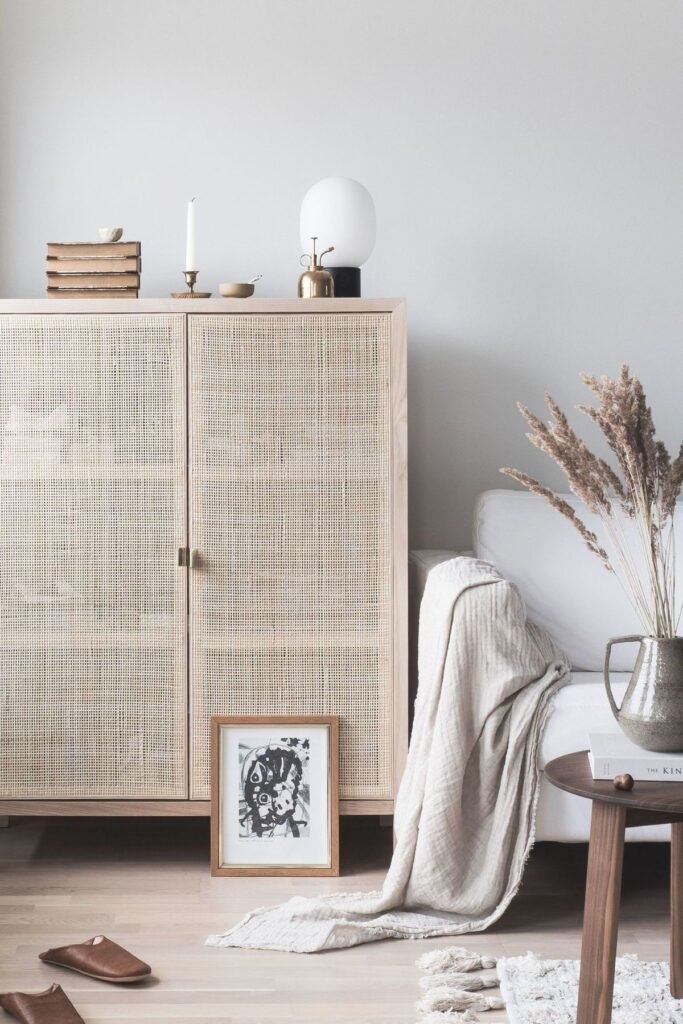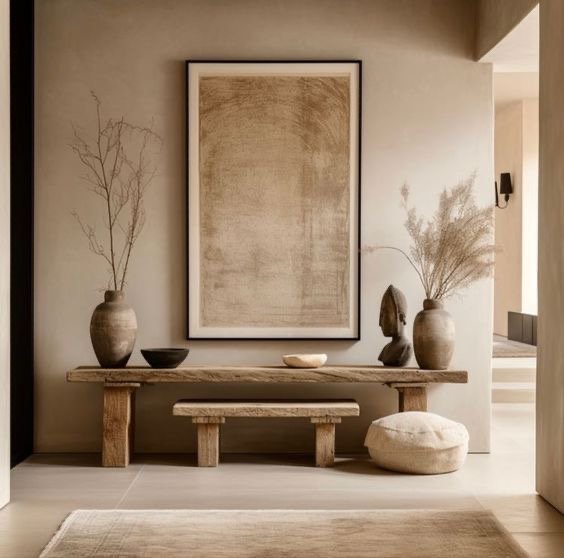When envisioning interior spaces, our primary focus is crafting a home that radiates a specific style. Whether sourced from online platforms or found within the pages of design books, there’s a plethora of diverse styles to choose from, and the blending of various aesthetics is a recurrent theme in design showcases. Recently, a novel term has emerged in the realm of design – the captivating Japandi Style.
The natural harmony ingrained in Japanese aesthetics owes much to the enduring cultural connections shared between Denmark and Japan. This impactful relationship traces its roots back over 150 years when Danish architects, artists, and designers embarked on a quest for fresh inspiration within Japan’s rich cultural tapestry. Many perceive remnants of early Japanese influence echoed in contemporary Danish ceramics, furniture, open architectural layouts, and minimalist design principles. Yet, it’s a mutual admiration society; Danish designs are equally revered throughout Japan.
Both design paradigms equally honor and venerate craftsmanship, artistic finesse, and the utilization of natural materials. The Japanese philosophy of “wabi-sabi” and the Danish concept of “hygge” both hinge on a profound appreciation for simplicity and a deeper understanding of life’s essence. “Japandi” epitomizes the fusion of Japanese and Scandinavian elements, heralding a fresh and innovative design trend born from the union of Japan and Scandinavia.
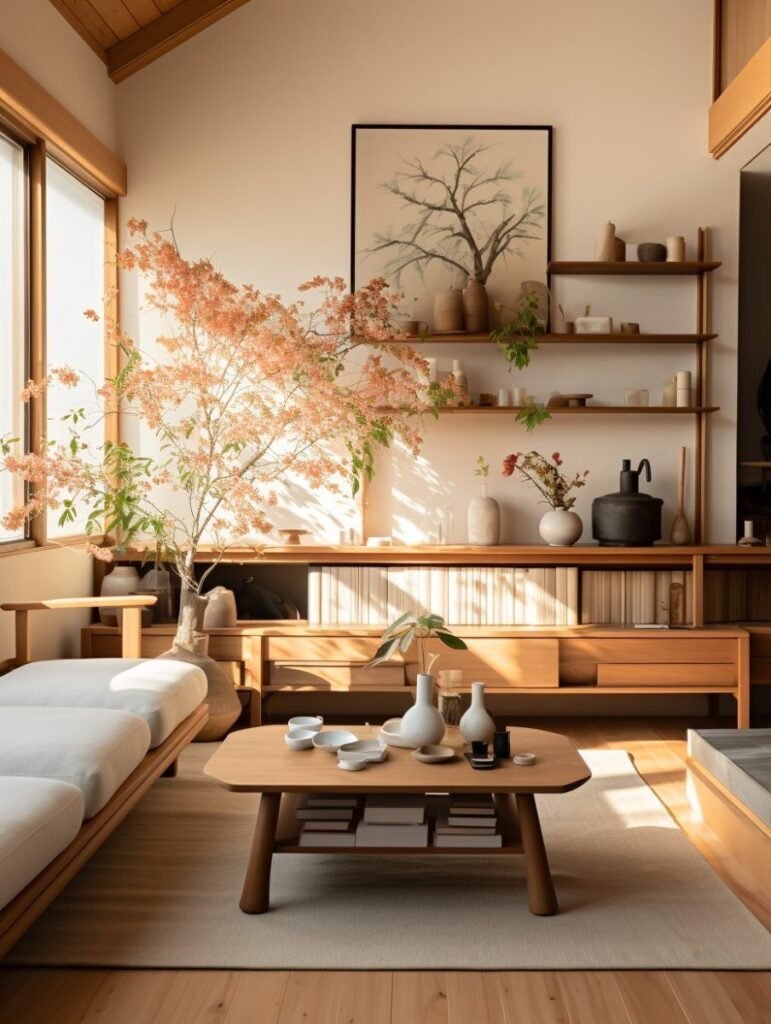
Table of Contents
How to Embody Japandi Style
Principles of Minimalist Design
Embracing Minimalist Design Principles
Minimalism isn’t just a design choice; it’s an artistic philosophy, a conscious reaction against the complexities of intricate design and abstract expression. Originating during the pinnacle of the 1950s Modernist movement, some argue that the roots or inspiration for minimalist art and architecture can be traced back to Japan’s architectural ethos.
At its core, minimalism isn’t merely about paring things down; it’s about distilling everything to its essential nature, achieving an effortless simplicity that speaks volumes. Franco Bertoni, in his revered tome ‘Minimalist Architecture,’ encapsulates this essence succinctly.
Take everything to its essential quality and achieve simplicity.
Franco Bertoni
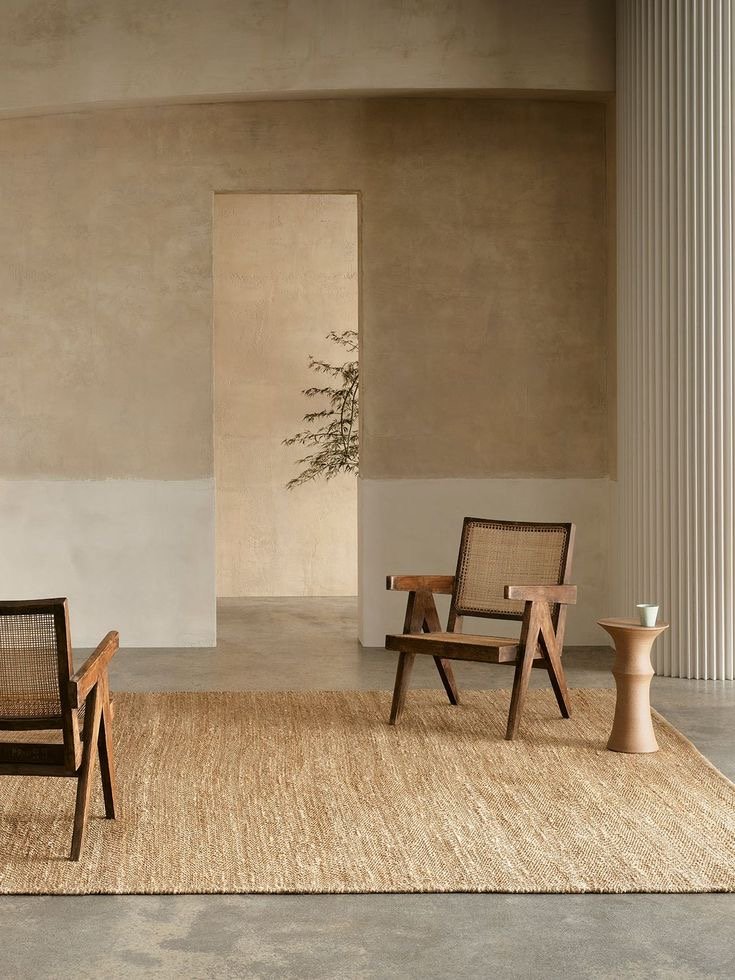
But Japandi Style isn’t confined to the rigidity sometimes associated with minimalism; it’s a harmonious blend that embraces simplicity while infusing an understated formality. It elevates the idea of minimalism by integrating the refined aesthetics from both Japanese and Scandinavian design philosophies.
This fusion style celebrates clean lines and uncluttered spaces, honoring the essence of each piece while encouraging functionality and elegance. It’s an artful curation that balances between the austere and the sophisticated, where each element holds significance in the narrative of the space.
Japandi’s minimalism, thus, transcends simplicity; it embodies a refined yet unpretentious ambiance, creating spaces that invite serenity, purpose, and an innate sense of grace.
Sleek and Clean Lines: The Essence of Japandi Style
At the heart of Japandi Style lies the embodiment of clean, uncluttered lines. Yet, this simplicity is not just a homage to the modernist mantra of ‘less is more.’ It goes beyond, forging a unique path that integrates formal elements diverging from the minimalist philosophies typically associated with Japanese art and architecture.
The beauty of Japandi design resides in its ability to infuse a sense of formality while maintaining an unassuming simplicity. It meticulously crafts a balance between the clean lines of Scandinavian design and the precision found in Japanese aesthetics.
Unlike the starkness sometimes associated with minimalism, Japandi elevates simplicity to a refined level, emphasizing a clean and organized look without sacrificing warmth or visual appeal. This amalgamation of styles champions a disciplined approach to design, where every line and element serves a purpose, resonating with both functionality and elegance.
In essence, Japandi’s sleek lines don’t just limit themselves to minimalism; they embrace a controlled formalism, creating a harmonious blend that embodies sophistication, practicality, and an understated charm.
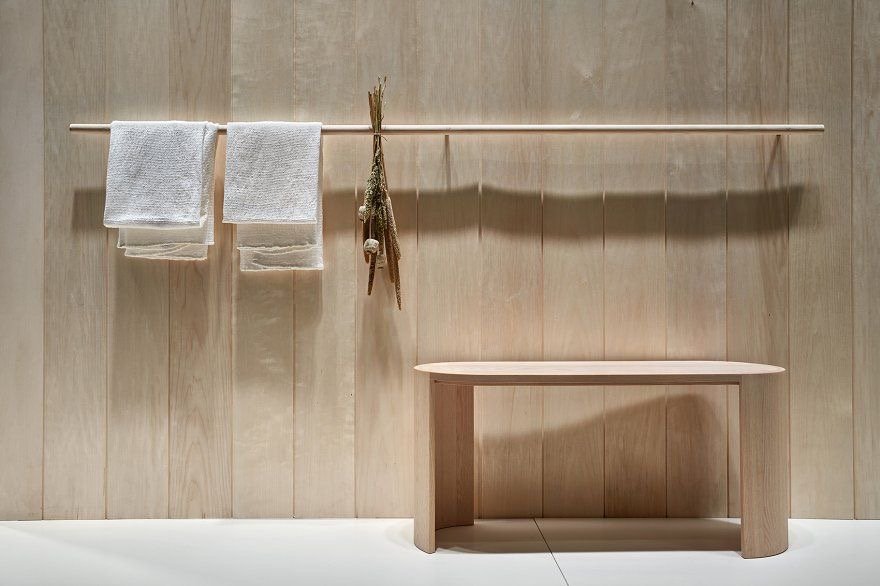
Crafted Furniture: Where Nordic and Japanese Designs Meet
A shared appreciation for craftsmanship stands as a pivotal connection between Nordic and Japanese design aesthetics. This mutual reverence implies a deliberate choice in selecting furniture pieces that withstand the test of time both in quality and style.
Nordic design embraces the artistry of woodworking, manifesting in furniture that not only boasts a striking appearance but also showcases the mastery of artisans. Similarly, Japanese design reveres traditional craftsmanship, often seen in meticulously crafted furniture pieces that honor both functionality and beauty.
In the realm of Japandi Style, this shared admiration for craftsmanship converges, urging homeowners and designers alike to opt for furniture that embodies longevity, marrying exquisite design with enduring quality. Pieces that exude timeless elegance while remaining resilient against passing trends become the cornerstone of this fusion style.
Selecting such furniture entails a meticulous eye for detail, seeking pieces that narrate stories of meticulous craftsmanship, celebrate the raw beauty of natural materials, and effortlessly merge into a harmonious composition within the living space. These crafted elements not only elevate the aesthetics but also contribute to the tactile experience, fostering an ambiance that transcends mere design – it embodies a lifestyle choice anchored in timeless sophistication and enduring allure.
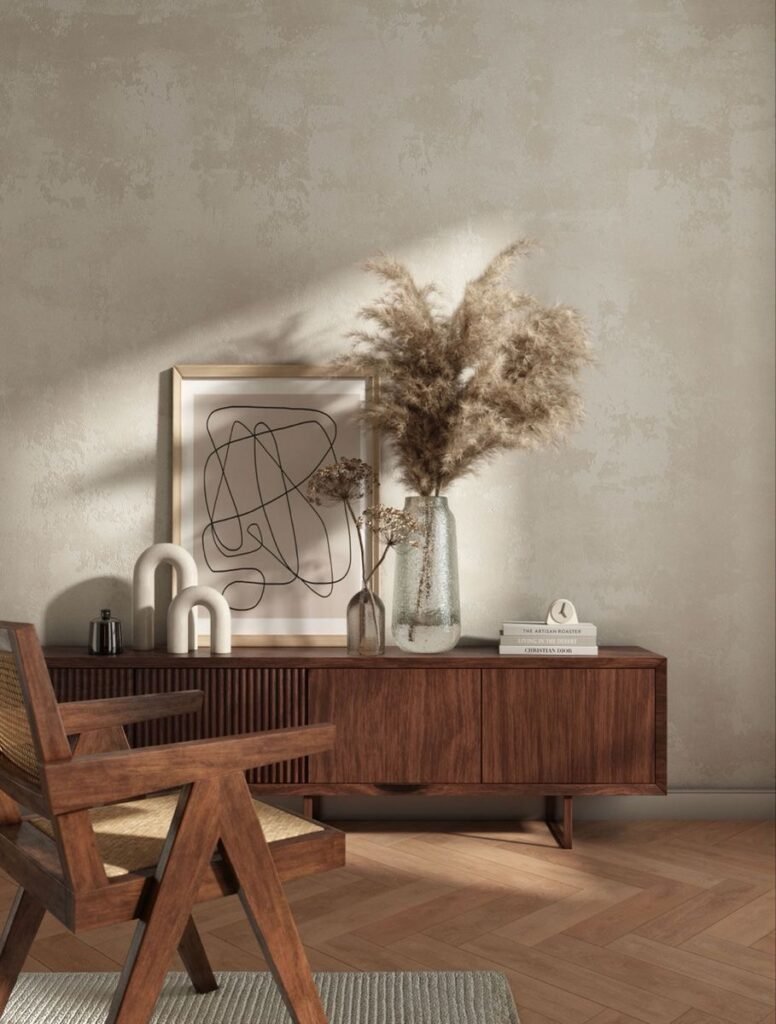
Neutral Tones: The Harmonious Palette of Japandi Style
One of the most striking commonalities between Nordic and Japanese design aesthetics is the pervasive use of soft, neutral hues that effortlessly cultivate an atmosphere of tranquility within any space. If you aspire to evoke the serene essence of Japandi Style, opting for neutral tones like whites, creams, beiges, and oatmeal shades becomes an infallible choice.
These gentle neutrals serve as the cornerstone of Japandi’s visual language, channeling a sense of calmness and natural grace into the ambiance. The interplay of these muted tones introduces a serene yet sophisticated allure, creating a canvas that speaks volumes through its simplicity.
In Japandi interiors, these neutral tones form a backdrop against which clean lines, exquisite craftsmanship, and carefully curated elements thrive, forging a space that exudes both elegance and warmth. They offer a versatile foundation, enabling the seamless integration of natural materials and accents, like warm woods or earthy textures, that further enrich the overall aesthetic.
Moreover, the beauty of neutrals lies in their ability to adapt and evolve, serving as a timeless canvas that gracefully accommodates changing trends or personal touches. They’re not just colors; they’re an embodiment of the Japandi ethos, fostering an environment that invites comfort, serenity, and a refined sense of simplicity.
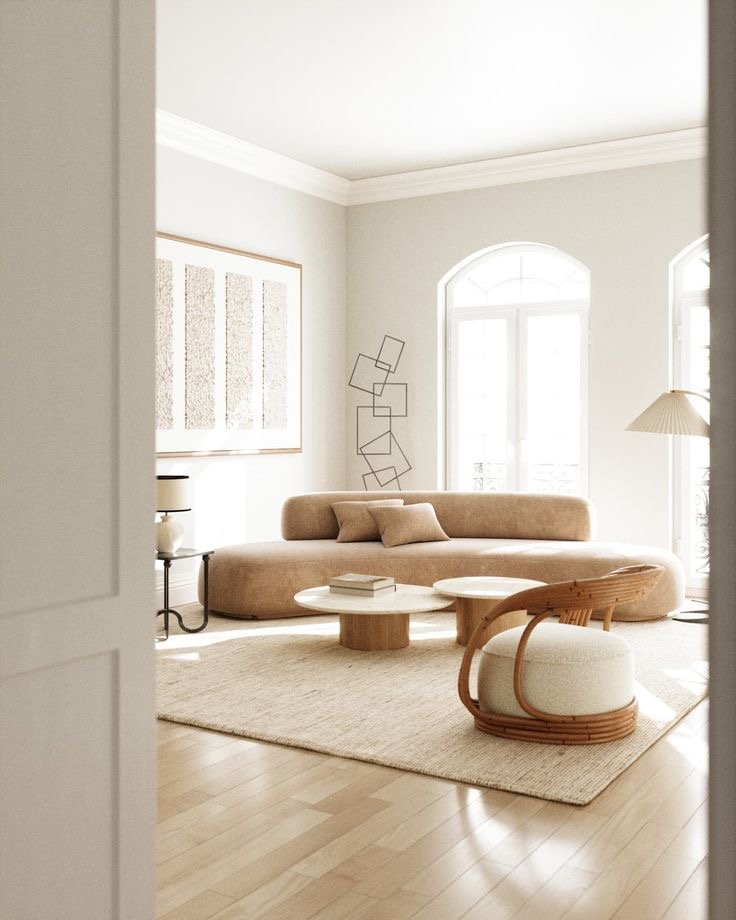
Contrasting Hues: Elevating Japandi Style with Tonal Dynamics
Bright whites, earthy tones, and contemporary grays stand as the foundational colors within Japandi Style. Unlike most minimalist decor schemes, Japandi boasts a slightly heightened contrast, particularly evident in accessories, wall art embellishments, and soft furnishings like rugs, cushions, and throws.
In Japandi interiors, the juxtaposition of these lighter, natural hues against darker shades such as blacks, deep reds, or other rich tones serves as a dynamic tool to amplify visual impact through contrast. By harmonizing the softer, earthy tones with touches of darker hues, a significant visual effect is achieved, creating a space that’s both engaging and inviting.
This interplay of contrasting tones accentuates the clean lines and simplicity inherent in Japandi design. It not only adds depth and character to the space but also showcases a curated balance between light and shadow, refinement and boldness.
The strategic use of contrasting colors in Japandi Style serves as a means of delineation, delineating focal points or accentuating specific design elements. It’s a subtle yet impactful technique that breathes life into the decor, allowing each piece and texture to stand out harmoniously against the backdrop of tranquil neutrality.
This sophisticated interplay of contrasting hues within the Japandi palette elevates the space, crafting an environment that effortlessly combines modern elegance with a touch of natural allure.
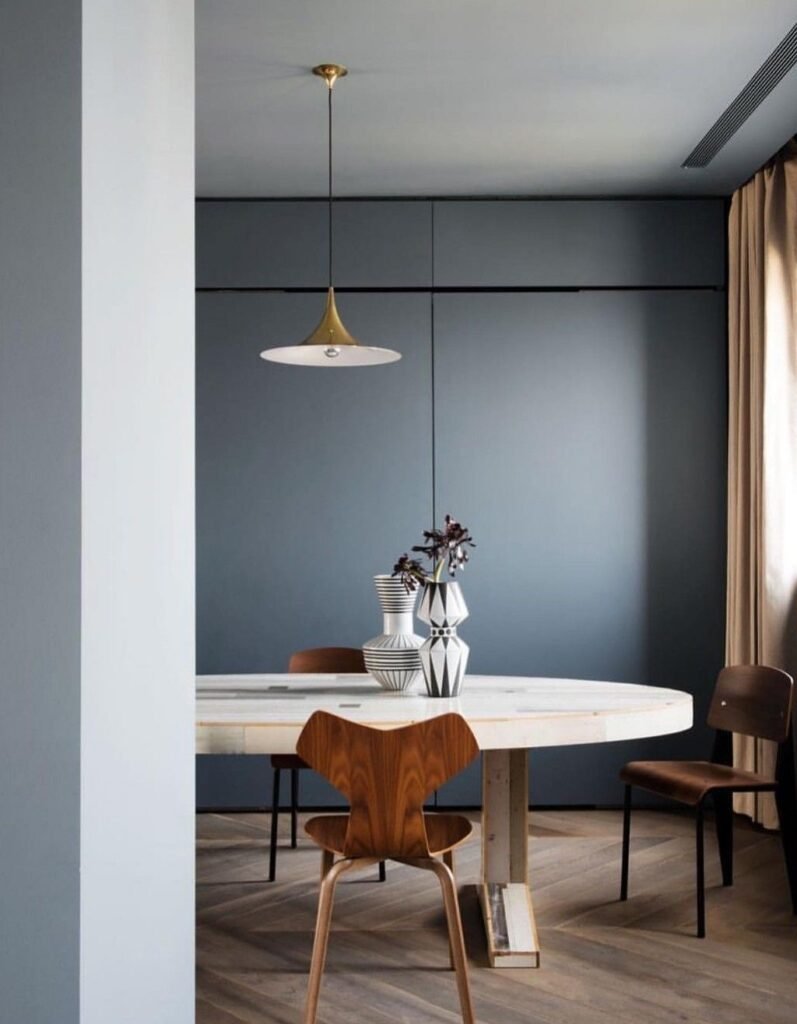
Embracing Natural Materials: The Essence of Japandi Style
In the pursuit of Japandi Style, integrating natural elements in materials becomes an absolute imperative. Wood, in particular, plays a pivotal role in crafting the authentic essence of Japandi, offering a sense of warmth and softness that defines its character. Among the preferred wood species, oak stands prominently, revered for its versatility and inherent beauty within this design fusion.
However, Japandi’s embrace of natural materials doesn’t end with wood; it extends to an array of elements like bamboo, rattan, cotton, and linen, each serving as integral components in the design narrative. These materials bring forth an organic charm, infusing spaces with textures and tones that resonate with the tranquility and simplicity emblematic of Japandi Style.
Wood, with its grains and natural imperfections, embodies the soul of Japandi, seamlessly merging Scandinavian minimalism with the rustic elegance of Japanese aesthetics. The choice of these natural materials isn’t just an aesthetic decision; it’s a commitment to authenticity, sustainability, and an environment-friendly approach to design.
In a Japandi-inspired space, the use of natural materials extends beyond furniture; it’s integrated into every aspect, from flooring to decor accents, evoking a sense of harmony between the human-made and the natural world. These elements not only add depth and character but also infuse spaces with an inherent sense of calmness and an organic, inviting allure.
